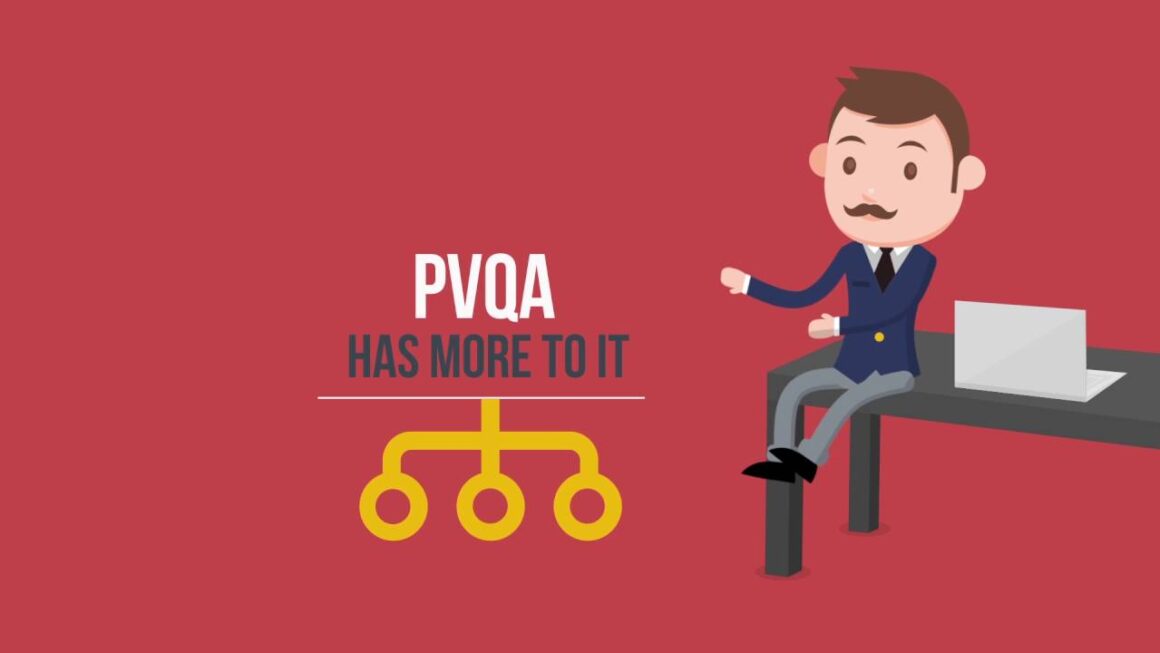Google Ads (Formerly Google AdWords): Basic Guide – AdWords is Google’s online advertising platform that allows you to target people interested in your website: Google AdWords allows you to take advantage of the millions of searches performed on Google every day, creating ads for your business and choosing when to publish them on Google above or alongside the search results and beyond.
I have dealt with Google AdWords several times, following the total review of the contents I decided to create a real Complete Guide to Google AdWords in which to collect information to create an advertising campaign on Google.
Google AdWords: Basic Guide: How is this article structured?
In this article you will find several paragraphs, each one deals with a specific topic, you can read it all or jump to the paragraph that interests you most, I just ask you a favor: this guide took a long time, and so I would be grateful if you shared it on Facebook or if click the like button or +1, it is very important to me.
How does Google Ads work?
Google Ads (before Google Adwords) allows you to enter keywords (keywords) relevant to your products/services and publish your AdWords ad on Google when someone searches for those words or related terms.
For example, when a person searches for ” window repair ” on Google, AdWords searches billions of web pages, blogs, and websites to find the most relevant results to show, these are the search results.
Many results are related to other window repair businesses, but only some businesses show up in the best positions: AdWords gives your business visibility even if your website doesn’t show up in the best results, and helps you present your business to many potential customers by advertising it on Google, here is the official video explaining “How Google AdWords works”:
The AdWords user, or advertiser, pays only when a user clicks on the ad, Google AdWords allows advertisers to advertise themselves according to the Pay Per Click (PPC) logic, i.e. you pay when you receive clicks on the ads.
Before creating a campaign on Google AdWords, it is a good idea to establish what the objectives of our campaign are :
- Do you want to advertise your website to get more visits?
- Do you want to advertise your website to make Brand Awareness?
- Do you want to advertise your website to increase sales?
- Want to advertise your website to do lead generation?
- Do you want to advertise your website to build an email database?
Search Network and Display Network
What is the difference between a Search and a Display campaign?
Making a very brief distinction, the differences of a pay per click advertising campaign on Google Adwords between the search network (Search) and the publisher network (Display) are as follows:
Search Network: more profiled surfers/users are obtained, often the conversion rate is better, the click is paid much more than the display network;
Display Network: you can remarket, you have a greater reach, or a greater ability to generate traffic, you pay fewer clicks but the conversion rate, if you don’t know how to manage the campaign well, could be very low.
Tips for getting the most out of your display network!
When we create an advertising campaign with Google AdWords available for the display network, we don’t have to limit ourselves to creating the campaign and monitoring the results by looking only at the reports. Rather, we should be concerned with:
- Do A / B Tests;
- Experiment with all the options made available by Google for advertising campaigns;
- Check the progress of the campaign;
- Work on manually managed placements and use automatic placements only for a short time (to understand what works and what doesn’t, which sites are better and which are worse);
- If possible, apply Remarketing strategies to convey traffic already qualified to the site of our company or our client.
The elements of an AdWords ad
Creating a campaign on Google AdWords is very simple, but mistakes are often made that may not make an advertising campaign on AdWords perform:
- The Ad Title: should attract attention and therefore encourage users who see our ad to click, the higher the CTR and the less you can spend on clicks, thus also increasing your ad quality score. The title should contain the keywords you want to buy traffic for.
- The description: must convey, quickly and with the limited space available, the message you want to convey.
- The Call to Action: In the announcement you should always insert a clear call to action, inviting the user to perform a certain action.
- The selection of keywords: it is a very delicate phase. In order not to waste your budget you should constantly optimize the selection of keywords, avoiding “informative” keywords and taking advantage of the “transactional” or transactional ones, in this way you can focus only on the keywords that people type when they want to buy a product/service, in my humble opinion the choice of keywords is a complicated art that requires creativity, analysis and study.
Ad Planning on Google AdWords
One of the features that you can take advantage of on Google AdWords is the scheduling of the times and days of publication of the ads.
Google AdWords allows you to program the time and day (or times and days) during which we want our ads to be published and made available by Google:
- We can only serve ads when we know our users/prospects are online or when they are likely to convert (purchase/sign up)
- It is possible to keep the daily budget unchanged but spend it entirely in the most productive/profitable bands
- We can take advantage of the advanced options to change the CPC according to the time slots of the day or according to the days of the week
Optimization of an Advertising Campaign on AdWords
After creating our campaign comes the hardest part of running a Google AdWords advertising campaign.
The phase of analysis and optimization of results, performance, CPC begins: it is now that we can test which ad group works best, which keyword we are paying more, which brings us results, and which instead is simply making us spend the budget we have established.
Today AdWords also allows us to have a series of automated suggestions and “opportunities “:
- The insertion of other keywords/keywords
- Advice on increasing the CPC per single keyword to get results
- Possibility to insert Callout or Site link to improve the CTR
- Ability to create personalized ads based on the words entered in the search by the user
And much more. If creating a campaign on Google AdWords is simple, optimizing it is the job of a professional, and it takes time, experience, and expertise.
In this article, entitled Basic Guide to Advertise on Google, you will find the key information to start creating a campaign on Google AdWords, but I cannot go into the details of every aspect, also because the article would become a real manual.
How can you check the performance of Google AdWords campaigns?
There are some very useful tricks to better control the performance of an online advertising campaign. Surely the first operations to be carried out are:
- Separate Search campaigns from Display campaigns (i.e. do not create a campaign that is available for both the search network and the display network, create two different ones);
- Separate Google AdWords advertising campaigns by the device (Desktop / Mobile);
- Segment campaigns based on different types of products/services offered;
- Separate ad groups for restricted topics;
- Always set goals and track conversions!
AdWords advice
Google AdWords Tips: Knowing the rules and best practices
When an ad is not approved, you will receive an email explaining the reason why the ad was not approved (today there is also a notifications section within Google AdWords which shows which is the norm that has not been respected and for which the ad cannot be approved).
One of the most frequent reasons is the URL: it is indicated in the account that the AdWords policies require that the target and display URLs are “identical”, that is, they must have the same domain.
Each ad group must contain ads that have the same domain. To advertise two different sites you must never do it in the same ad group (better create a new campaign or, at most, a new ad group). Both paused ads and active ads must point to a single site and therefore to a single URL.
Ads can also be frowned upon for broken URLs – robots got stuck somewhere while crawling the website. We must remember that the site that works on our computer/desktop may not always work for everyone. To find these errors on Firefox you will find the “Header Tools”): the tool scans the pages and checks for 404 errors.
Also, import punctuation: if an ad does not have commas, spaces, periods, more than one exclamation point, this could be a reason for ad-blocking / disapproval.
Smiles cannot be inserted and it is better to avoid words written in all capital letters.
Google does not register trademarks but can monitor them at the customer’s request: if a customer wants his trademark not to be used, he can communicate it to Google, which automatically monitors the ads (and consequently blocks ads that use these brands). The simplest solutions to adopt in these cases are:
- For those who are in contact with the owner of the trademark and have the authorization to use the trademark, there is a URL with a form to authorize the account to use the trademark;
- If you have no contact with the owner of the trademark, you must remove the trademark from the advertisement;
- If you own a brand, there is a form in the AdWords guide to fill out asking not to use that brand in your ads. AdWords experts will evaluate the request and eventually insert the brand among those to be monitored.
When we create an advertising campaign with Google AdWords available for the display network, we don’t have to limit ourselves to creating the campaign and monitoring the results by looking only at the reports. Rather, we should be concerned with:
- Do A / B Tests;
- Experiment with all the options made available by Google for advertising campaigns;
- Check the progress of the campaign;
- Work on manually managed placements and use automatic placements only for a short time (to understand what works and what doesn’t, which sites are better and which are worse);
- If possible, apply Remarketing strategies to convey traffic already qualified to the site of our company or our client.
Which formats convert the most?
Remember that 336 * 280, 300 * 250 and 728 * 90 help increase website conversions. If, on the other hand, you want to make brand awareness, it is better to use 120 * 60, 125 * 125, and 468 * 60.
Divide the Keywords?
It is advisable to divide the Keywords between “Phrase”, “Exact”, “Negative” to have total control of an advertising campaign. On the exact phrases, it is better to raise the PPC to make google show the ad only when the searches are done for that exact phrase.
The Quality Score:
The Quality Score in some cases is assigned differently between Exact Match and Exact Phrase even if we have the same keywords. By removing some keywords, the quality score can collapse. There is a certain link between keywords and quality scores.
How to get the maximum possible number of contacts from our target users by paying the lowest possible cost per click?
Clearly, we must, first of all, understand precisely what our target audience is. In this way we will be able to point to the contact of users who are in a phase of the advanced purchase process: in summary, we have to look for people who want to buy a certain product online.
The keyword score must be as high as possible (the quality score must be high). We, therefore, use specific keywords, of three or more words.
Trying to optimize bids and positions is key to getting the best results. So let’s try to get the highest positions for the best keywords, let’s not go beyond the third position, delete the keywords that have a low-quality score (or pause them), remember to select the best placements, and negative keywords if needed!
Singular or Plural?
Declining singular and plural for keywords allows you to intercept users who are looking for a specific product/service or information at different stages: there could be those who are only looking for information with plural and those who are ready to buy something looking for a singular, there did you ever think?
Products subject to restriction:
Google has established for legal and business reasons that some products cannot be advertised through AdWords:
- Tobacco products: cigarettes, cigars, electronic cigarettes, maps, filters, and associated products (if you also promote other products these must be removed from the site).
- Weapons: Weapons cannot be advertised. If they are present on the site but other products are also sold, they must be deleted from the site.
- Remote games: lotteries, … They can be advertised as long as the promoter site has a valid license in the country in which it operates. You need to request a certification where you also attach your license.
- Sites with the presence of malware: if your sites have any malware, they are disabled to protect users (you can check the status of the site on Self Browsing, the page where you can enter the name of the site and from which you can get an outcome on website status).
Dynamic Ads Google AdWords Search Network
If you are already running a campaign on Google AdWords, or if you have created your first campaign on Google AdWords, you may receive a message from Google informing you that “your ads are valid to become dynamic search ads”. What does all this mean?
Usually, Google shows Google AdWords ads based on the keywords selected by the user (or rather the manager of the AdWords account who creates the ad and enters the keywords it deems most relevant for its advertising campaign), the ads dynamic search networks do not use keywords.
Dynamic ads are displayed using the content of our website, or rather the website for which we are managing an advertising campaign on AdWords.
These announcements are:
- Easier to manage (we won’t have to select and evaluate keywords, Google will take care of everything)
- Automatically generated
- Ads that bring traffic to the site without creating very long lists of keywords
Google AdWords, on its page dedicated to dynamic search ads, recommends when it is good to use this kind of ads:
- If the website we want to promote presents and offers different products or services
- If the products or services offered change frequently
- If you are selling seasonal products or there are offers that change often
Google AdWords Books: Which to Buy?
If you want to deepen the subject many texts on the market talk about Google AdWords and Search Engine Marketing, below you will find a small selection from Amazon, even if, needless to say, after reading these books you will still have to move on to the practical phase: getting your hands dirty and creating your campaigns is the best way to learn (also because if you spend money without getting results, the pressure and focus are completely different)!
Google Ads Coupon and AdWords Coupon
Google distributes coupons through the Google Partner Program through promotional codes that can be used to redeem credit to apply to the Google Ads account credit.
To use these codes you need to enter a payment method into your account, then enter the promotional code from the tools – billing and payments icon.
At this point from the settings, you will find the item manage promotional codes.
On the Landing Page!
The landing page, or the landing page, the page on which users arrive when they click on your AdWords ad, is essential for the bond quality score and therefore for the score of your ad and to try to convert users into customers.
If you liked this article, remember to like it or share it on Facebook, Twitter, or LinkedIn (choose your favorite social network). If you have any doubts or questions, leave a comment below, if you want to stay updated on all the news and insurance guides, subscribe to the newsletter.
Good work and good money online,




